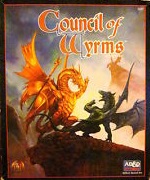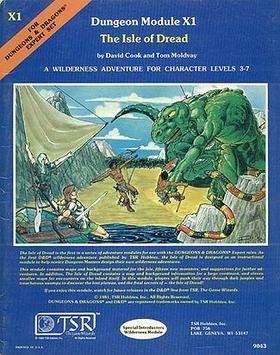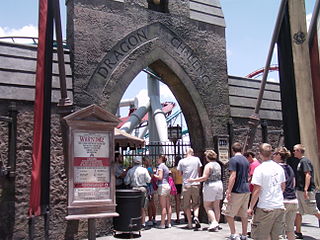Dragon Island may refer to:
- Dragon Island (New Zealand), in the Auckland Region
- Dragonera, in the Balearic Islands
- Dragon Island, a fictional island in the Narnia world created by C. S. Lewis
- "Dragon Island", an episode of the TV series Pocoyo
Dragon Island may refer to:

The Komodo dragon, also known as the Komodo monitor, is a large reptile of the monitor lizard family Varanidae that is endemic to the Indonesian islands of Komodo, Rinca, Flores, Gili Dasami, and Gili Motang. It is the largest extant species of lizard, with the males growing to a maximum length of 3 m (9.8 ft) and weighing up to 150 kg (330 lb).
Needle may refer to:
Long may refer to:
DQ may stand for:
Kamehameha may refer to:
Lizard King may refer to:

Council of Wyrms is a Dungeons & Dragons setting and boxed set, published in 1994.

Daryl Frank Dragon was an American musician known as Captain from the pop musical duo Captain & Tennille with his wife, Toni Tennille.

The Isle of Dread is an adventure for the Dungeons & Dragons role-playing game. The adventure, module code X1, was originally published in 1981. Written by David "Zeb" Cook and Tom Moldvay, it is among the most widely circulated of all Dungeons & Dragons adventures due to its inclusion as part of the D&D Expert Set. In the adventure, the player characters arrive on the Isle of Dread seeking a lost treasure, and there encounter new nonhuman races.

Dragon Warrior Monsters 2, known in Japan as Dragon Quest Monsters 2, is a role-playing video game published by Enix for the Game Boy Color. It is the second Dragon Warrior Monsters game for the Game Boy Color and features two different versions of the same game, Cobi's Journey and Tara's Adventure. Both games were remade in 2002 for the PlayStation in a compilation game called Dragon Quest Monsters 1+2 and released only in Japan. The Nintendo 3DS version combined both games into one and was released only in Japan in 2014 with the title Dragon Quest Monsters 2: Iru and Luca's Marvelous Mysterious Key. The 3DS version was later brought to iOS, Android on August 6, 2020, in Japan.
Isabela may refer to:
Plane most often refers to:

Kwon Ji-yong, best known as G-Dragon (지드래곤), is a South Korean rapper, singer, songwriter, and entrepreneur, known as the "King of K-pop". Born and raised in Seoul, South Korea, G-Dragon made his debut in 2006 and rose to prominence as the leader of the South Korean boy band BigBang, which went on to become one of the best-selling boy bands in the world.
Titania may refer to:
Lego Ninjago is a Lego theme that was created in 2011 and a flagship brand of The Lego Group. It is the first theme to be based on ninjas since the discontinuation of the Lego Ninja theme in 2000. It was produced to coincide with the animated television series Ninjago, which was superseded in 2023 by a new series titled Ninjago: Dragons Rising.
A white dragon is a symbol associated in Welsh mythology with the Anglo-Saxons.
Dragon Gate may refer to:

My Father's Dragon is a 2022 animated fantasy adventure comedy film directed by Nora Twomey with a screenplay by Meg LeFauve who co-wrote the story with John Morgan. It is based on the 1948 children's novel of the same name by Ruth Stiles Gannett. The film is also dedicated to Morgan who died from cancer during the film's production in March 2016. It stars the voices of Jacob Tremblay, Gaten Matarazzo, Golshifteh Farahani, Dianne Wiest, Rita Moreno, Chris O'Dowd, Judy Greer, Alan Cumming, Yara Shahidi, Jackie Earle Haley, Whoopi Goldberg, and Ian McShane.

Dragon Challenge, formerly named Dueling Dragons (1999–2010), was a pair of intertwined inverted roller coasters in the Wizarding World of Harry Potter area of Islands of Adventure in Orlando, Florida, United States. Designed by Bolliger & Mabillard of Switzerland, the ride was a dueling roller coaster featuring two tracks – one side was called Chinese Fireball and the other Hungarian Horntail – that were themed as two chasing dragons. Its layout involved two trains sharing adjacent lift hills, with each traversing unique courses. Trains on the Chinese Fireball track reached a maximum speed of 60 mph (97 km/h), while trains on the Hungarian Horntail reached 55 mph (89 km/h). Both tracks featured five inversions and an identical ride duration of 2 minutes and 25 seconds.

My Little Pony: Make Your Mark is a Canadian animated television series tied to the fifth incarnation of Hasbro's My Little Pony toyline. Set after the events of the film My Little Pony: A New Generation (2021), the series follows five ponies—Sunny Starscout, an idealistic earth pony; Izzy Moonbow, a creative unicorn; Hitch Trailblazer, a responsible earth pony; and sisters Zipp Storm and Pipp Petals, two pegasi princesses—on their adventures and battles across Equestria. The ponies are joined later on by Misty Brightdawn, a shy unicorn and former associate of the series' antagonist, the villainous alicorn Opaline Arcana.